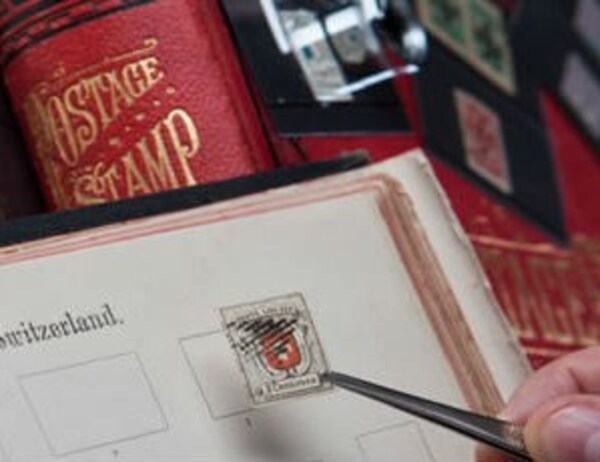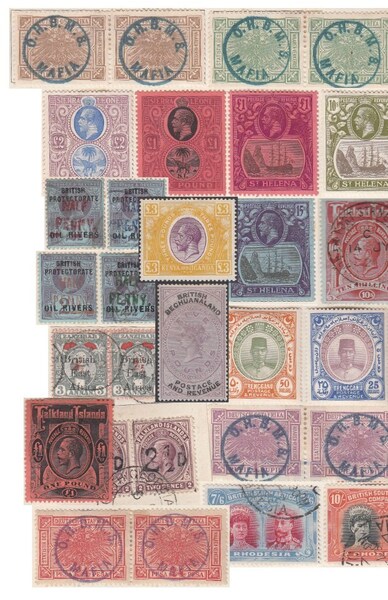“The philatelic legacy, to which I have dedicated my whole life with the utmost commitment, I leave with pride and joy to my German fatherland.”
Collectors will occasionally come across the phrase “ex Ferrary”, usually at the end of an auction description, a few weeks ago a client asked us what it meant.
Philipp Von Ferrary (or Philippe Arnold De La Rénotière von Ferrary) b.January 11, 1858 – d.May 20, 1917 was an Austrian of noble birth living in France. He devoted his life to philately and amassed the greatest and most comprehensive collection of stamps ever assembled. His incredible wealth came from his mother and he could trace his lineage back to Oberto Ferracius an early Genoese banker who had died surrounded by treasure after inadvertently locking himself into his own vault, the only key in his pocket.
Philipp had a good start in life, King Louis Philippe of France was his god-father, but his family life was fraught as his relationship with his austere father was poor (he later discovered that he was in fact illegitimate and lived in fear that this would be publicly uncovered). He also suffered upheaval having escaped Paris during the Prussian siege and lived in London where he began collecting, visiting Stanley Gibbons and other dealers with his tutor.
As an adult collector he demonstrated a fondness for legendary rarities and counted among his acquisitions seven 1847 “Post Office” Mauritius stamps, an unused 1851 two-cent Hawaiian Missionary, the 1855 Swedish Treskilling yellow error and the greatest of them all, the British Guiana 1853 One- Cent Black on Magenta. It was Ferrarys ownership of “the world’s rarest stamp” that brought it to the general public’s attention.
During his collecting lifetime he undoubtedly made many dealers wealthy, it was normal custom for his curator to take “le 10% d’amitie” (the 10% friendship) fee from sellers when paying for Ferrary’s purchases. He was also known to buy stamps in person and it was the custom for the employees of large stamp businesses to place their approval books before him and then look the other way. After Ferrary left the premises the empty spaces were assessed and an invoice sent.
When the Great War broke out in July 1914, Ferrary was in Holland. As an Austrian citizen he was technically an enemy of France and so, unable to return to his Parisian home, he took up residence in Switzerland. In January 1915 he rewrote his will, leaving his entire collection to the Berlin Postal Museum. Records show he may well have been able to return to Paris during 1916, and if this is true, it would have marked the last time he saw his collection.
Philipp von Ferrary died at age 67 on 20 May 1917 in Switzerland. He suffered a fatal heart attack in a taxicab returning from a visit with a local stamp dealer. His Will stated his desire that “The philatelic legacy, to which I have dedicated my whole life with the utmost commitment, I leave with pride and joy to my German fatherland.” But with Ferrary’s stamps secure in Paris, France had no intention of releasing the collection.
Initially the French sequestered the collection, demanding five million francs in inheritance tax plus a further million in related charges from the cash-strapped Berlin Postal Museum. They then seized the collection as enemy property under provisions of the Treaty of Versailles that came into effect in January 1920. The French government then announced that the collection would be sold at auction, with the proceeds from the sale being deducted from the war reparations owed by Germany to France.
It took fourteen auctions between 23 June 1921 to 26 November 1925 to dispose of the confiscated stamps. The greatest stamp collection the world has ever known was divided up into over 8,000 lots with meagre descriptions and no guarantees as to authenticity or condition. The collection included almost every rarity then known, and achieved a grand total of over 27 million French francs.
The 1856 One-Cent Black on Magenta appeared as lot 295 in the third sale of the series on the afternoon of Thursday, 6 April 1922. The stamp’s first ever public viewing took place on the afternoon of Tuesday, 4 April, exactly sixty-six years after its cancellation in British Guiana.
So, when you occasionally come across the phrase “ex Ferray” you can ponder a stamp collection worth more than the most expensive motor car!


 General
General
 General
General
 General
General